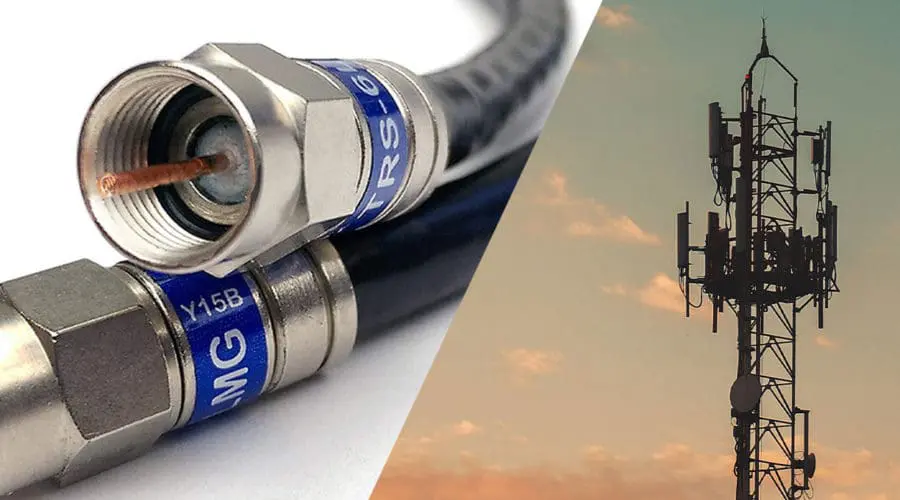justineanweiler.com – The internet has transformed the way we communicate, access information, and conduct business. This evolution has seen a dramatic shift from traditional wired connections to modern wireless technologies. In this article, we will explore the journey from cable-based internet to the wireless world we inhabit today, highlighting the key technologies, advantages, and challenges along the way.
The Age of Cable: Dial-Up and Broadband
Dial-Up Internet
The internet’s early days were marked by dial-up connections, which utilized telephone lines to transmit data. Users connected to the internet by dialing a phone number, resulting in a slow and often frustrating experience. Dial-up offered speeds of up to 56 Kbps, making activities like browsing and downloading files painfully slow. However, this was revolutionary for the time, introducing many to the vast world of online information.
Broadband Revolution
The late 1990s and early 2000s saw the advent of broadband technology, significantly improving internet speeds and reliability. Broadband connections, including Digital Subscriber Line (DSL) and cable modems, allowed users to access the internet at much higher speeds (often in the Mbps range) without tying up phone lines. This shift enabled a new era of online activities, including video streaming, online gaming, and larger file downloads.
The Rise of Wireless Technology
Introduction of Wi-Fi
As the demand for mobile connectivity grew, so did the development of wireless technologies. The introduction of Wi-Fi in the late 1990s revolutionized internet access, allowing devices to connect to the internet without physical cables. Wi-Fi technology operates on radio waves, enabling users to connect laptops, smartphones, and tablets to the internet from virtually anywhere within a certain range.
The Evolution of Wireless Standards
The development of wireless standards has been pivotal in shaping internet connectivity. From the initial 802.11b standard, which provided speeds of up to 11 Mbps, Wi-Fi has evolved through various iterations, including 802.11g, 802.11n, and the current 802.11ac and 802.11ax (Wi-Fi 6). Each advancement has brought increased speed, efficiency, and capacity, making wireless internet a viable option for homes and businesses.
Mobile Connectivity: 3G, 4G, and 5G
The shift from cable to wireless was further accelerated by the rise of mobile internet technologies.
3G and 4G Networks
3G technology, introduced in the early 2000s, enabled mobile devices to access the internet at significantly higher speeds than before, allowing for web browsing and basic app usage. This was followed by the rollout of 4G LTE networks in the late 2000s, which offered even faster data transfer rates and lower latency. With 4G, users could stream high-definition videos, play online games, and utilize data-heavy applications seamlessly.
The Arrival of 5G
The latest leap in mobile connectivity, 5G, promises to further transform how we access the internet. With speeds up to 100 times faster than 4G, 5G enables innovations like augmented reality, smart cities, and the Internet of Things (IoT). Its low latency and increased capacity are set to revolutionize industries, enhancing everything from healthcare to transportation.
Advantages of Wireless Connectivity
Convenience and Mobility
One of the most significant benefits of wireless internet is the convenience it offers. Users can connect to the internet from virtually anywhere, whether at home, in a café, or on the go. This mobility has transformed the way we work and interact, enabling remote work, online learning, and instant communication.
Increased Accessibility
Wireless technology has also improved internet accessibility in underserved and rural areas. Satellite internet and mobile networks can reach locations where traditional cable infrastructure is lacking, bridging the digital divide and allowing more people to access online resources.
Challenges and Future Considerations
Reliability and Speed
Despite its advantages, wireless connectivity does come with challenges. Signal strength can be affected by distance from the router, physical obstacles, and interference from other electronic devices. Additionally, while wireless speeds have improved, they can still lag behind wired connections in terms of reliability and consistency.
Security Concerns
Wireless networks are more susceptible to security breaches than wired connections. Users must be vigilant about protecting their networks with strong passwords and encryption protocols to safeguard personal information from unauthorized access.
The Future of Connectivity
As technology continues to advance, the future of internet connectivity looks promising. Innovations like mesh networking, advanced satellite internet, and the continued rollout of 5G are set to enhance wireless capabilities further. As we move toward an increasingly connected world, the blend of wired and wireless technologies will likely coexist, each serving unique purposes and needs.
Conclusion
The journey from cable to wireless internet has been nothing short of revolutionary. As we embrace the advantages of wireless connectivity, it’s essential to remain aware of the challenges that come with it. With ongoing technological advancements, the future of internet connectivity promises to be faster, more reliable, and accessible than ever before, paving the way for a truly connected world.





